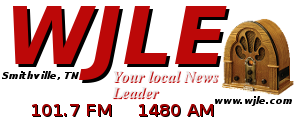August 25, 2019
By: Dwayne Page
Newly released data from the Tennessee Department of Labor and Workforce Development (TDLWD) shows July 2019 county unemployment increased in counties across the state.
DeKalb County’s Jobless rate for July was 5.2%, up from the rate of 4.8% for June and an increase from the 2018 July jobless rate of 4.9%.
The local labor force for July was 7,988. A total of 7,569 were employed and 419 were without work.
Rates inched upward in 93 of Tennessee’s 95 counties and remained the same in two counties last month. 44 counties have an unemployment rate of less than five percent, while 51 counties have a rate of five percent or higher.
“Due to a variety of factors, it’s not unusual to see unemployment increase on the county level during the summer months,” said TDLWD Commissioner Jeff McCord. “We’ll continue to monitor these rates as we finish the summer and move into fall.”
Williamson and Davidson counties had Tennessee’s lowest jobless rate during July. At 3.2 percent, both counties experienced a jump of 0.2 of a percentage point in unemployment when compared to June’s numbers.
Sevier, Cheatham, Rutherford, Sumner, Wilson, Maury, Robertson, and Dickson round out the list of counties with the ten lowest unemployment rates in the state.
Hancock County had the state’s highest unemployment rate at 8.2 percent. That is 0.5 of a percentage point higher than it was in June. At 8.1 percent, Clay County had the second-highest jobless rate in July. That represents a jump of 0.8 percentage point when compared to the previous month.
Lake, Rhea, Weakley, Bledsoe, Lauderdale, Carroll, McNairy, and Dyer counties had the next highest unemployment rates in July.
Statewide, unemployment slightly increased last month to 3.5 percent, an uptick of 0.1 of a percentage point when compared to June’s statistic.
The July unemployment rate for the United States remained unchanged in July at 3.7 percent.
County unemployment rates are not seasonally adjusted, while both the state and national rates use the seasonal adjustment to eliminate outside influencers on the statistics.



